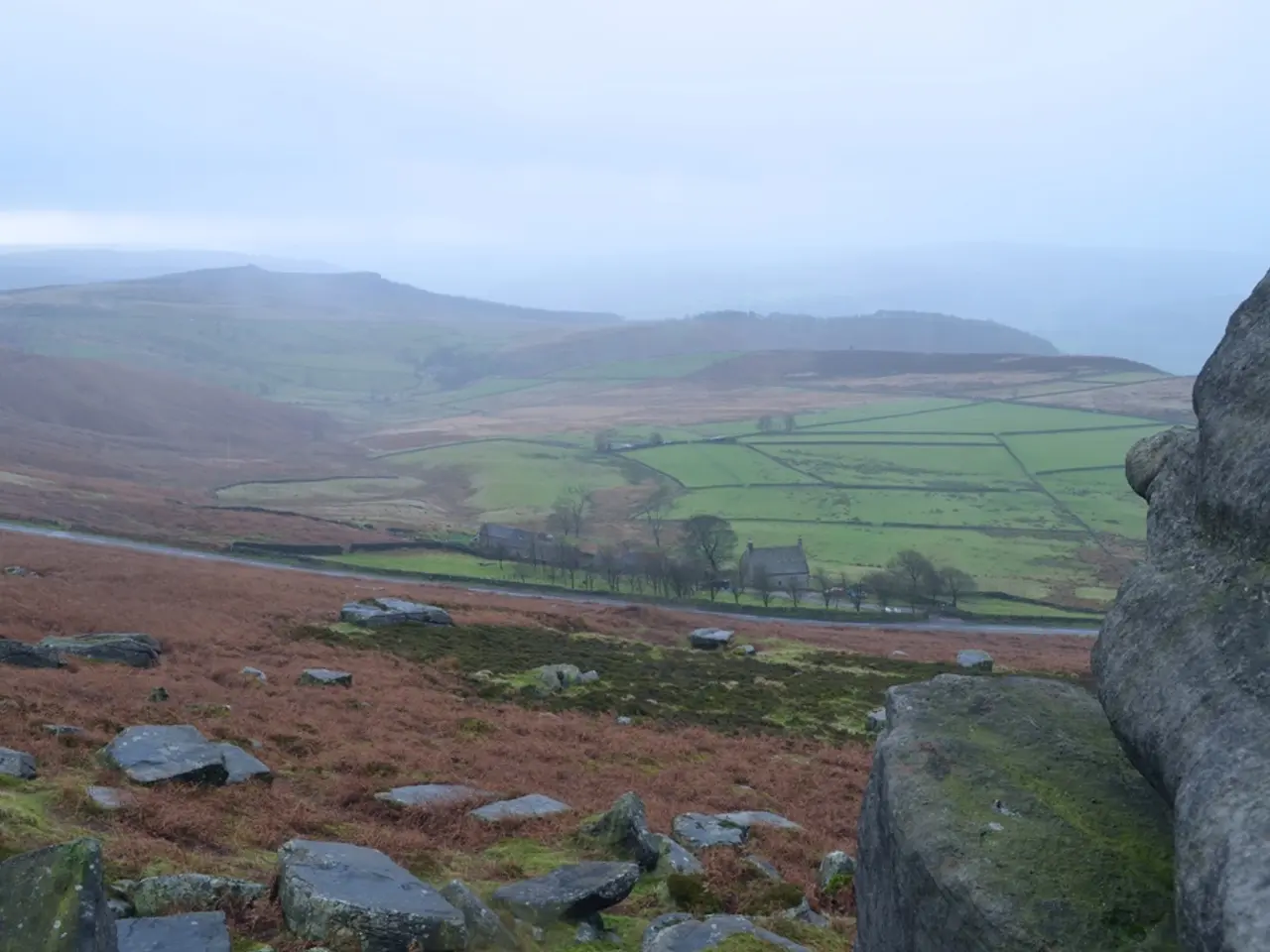Volcanic Eruptions: Revealing the Mysteries Behind Magma Formation
=========================================================================
The Earth's surface is a testament to the dynamic forces that lie beneath, and one of the most significant of these forces is magmatism. This process, which results in the formation of magma, plays a crucial role in creating new landscapes and shaping existing ones.
Magma, the molten rock stored beneath the Earth's surface, is a product of rock melting, primarily in the Earth's mantle or lower crust. This melting occurs due to increased heat or decreased pressure, often in a partially molten layer beneath the Earth's crust [1].
Tectonic processes, such as subduction, play a vital role in magma formation. Subduction introduces water and volatiles into the mantle wedge above the descending slab, lowering melting points and generating magmas [4]. Decompression melting also occurs at mid-ocean ridges as mantle rock rises and pressure drops.
The composition of the source rock and the presence of volatiles significantly influence magma generation and evolution. As magma ascends, it undergoes fractional crystallization and assimilation, modifying its composition [2]. The magmatic systems in subduction zones, for instance, are affected by factors such as water content, oxidation state, and the tectonic-magmatic environment, which also govern mineralization potential in ore deposits [3].
Magma types vary in their properties, with andesitic magma being one of the most common. Andesitic magma forms from the partial melting of both Earth's mantle and crustal rocks and is associated with explosive eruptions due to the release of gases and rapid cooling [5]. It typically contains more silica than basaltic magma, making it more viscous [6].
On the other hand, mafic magmas, which are low in silica and runny, with viscosities ranging from molasses to peanut butter, are formed primarily from the melting of the Earth's mantle [1]. Rhyolitic magma, the hottest and most viscous type of magma, with a high silica content and light gray or white color, forms from the partial melting of crustal rocks [2].
Rhyolitic magma is associated with volcanic eruptions that produce large volumes of ash and lava flows [7]. These eruptions can reshape the landscape dramatically, as seen in areas like Yellowstone National Park in the United States and the Scottish Highlands.
In conclusion, magmatism results from mantle or lower crust melting under conditions controlled by temperature, pressure, volatile content, and tectonic setting, such as subduction zones or rift environments [1][2][3][4]. The composition and emplacement processes of magma are further influenced by chemical evolution and local geology. Understanding magmatism provides valuable insights into the Earth's past, present, and potentially, its future.
References:
[1] Taylor, S. R., & McBirney, A. R. (1993). The Solid Earth. Prentice Hall. [2] Condomines, N., & Moreau, G. (2010). Fundamentals of Volcanology. Cambridge University Press. [3] Hawkesworth, C. J., & O'Nions, R. K. (2005). The Earth's Crust: Composition, Structure, and Evolution. Cambridge University Press. [4] Sleep, N. H. (2005). Volcanoes. W.H. Freeman and Company. [5] McBirney, A. R., & Klemm, M. (2008). Volcanology: An Introduction. Wiley-Blackwell. [6] Pollack, H. N., & Chapman, M. (2002). Understanding Earth. Cambridge University Press. [7] Self, S., & Heiken, G. (2005). Volcanoes: Their History and Evolution. Cambridge University Press.
Science advances our understanding of magmatism, a critical process responsible for shaping the Earth's surface. In the realm of medical-conditions, for instance, understanding the chemical alterations caused by magma can reveal new insights about the evolution of environmental-science and technology, as well as the potential risks associated with volatile substances emitted during magmatic processes.



